23 mind map examples for brainstorming & planning
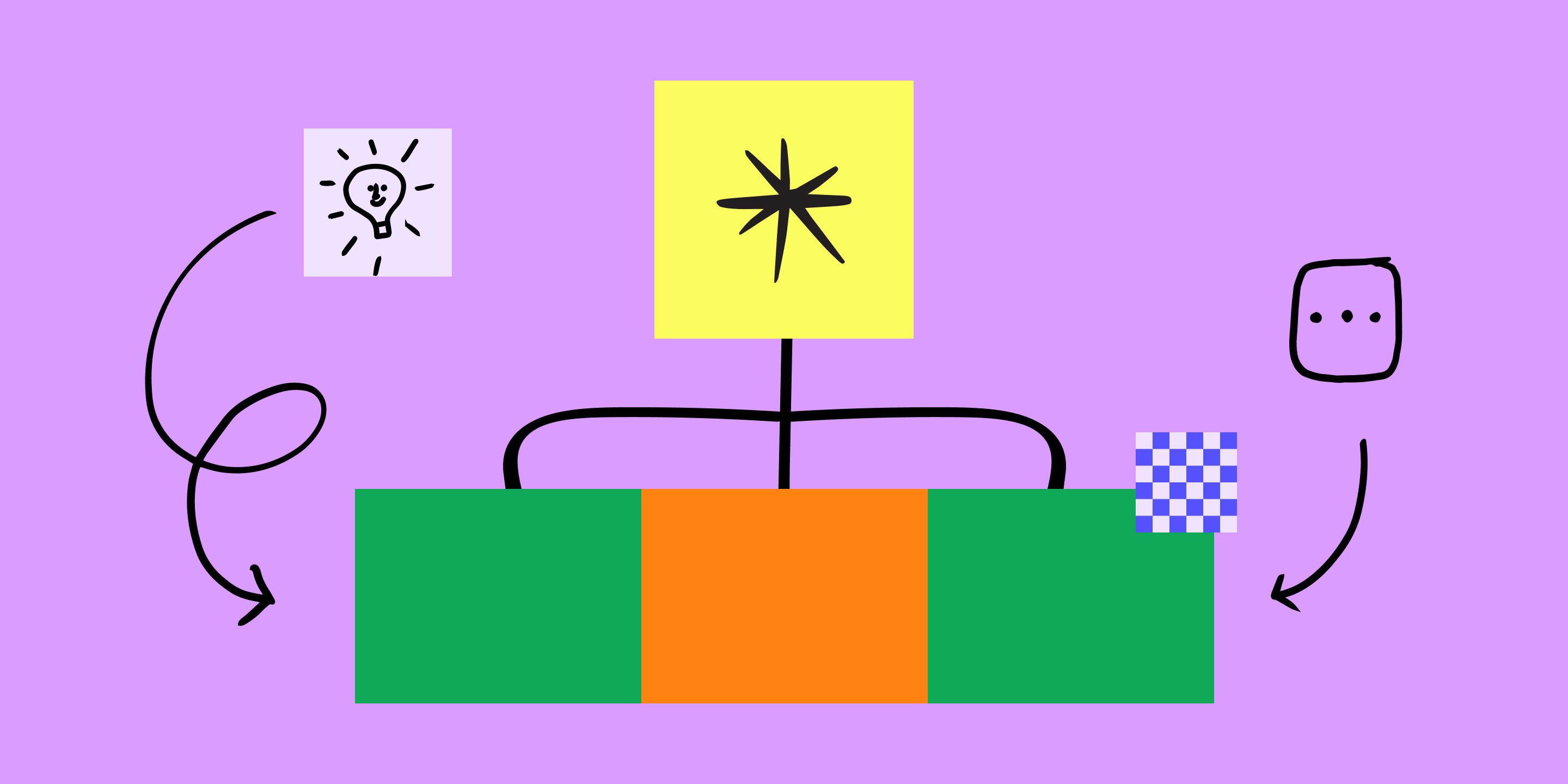
Whether you're designing a product, managing your strategy, or defining project goals, visually communicating an idea helps collaborators understand what you want to accomplish. If you're having trouble putting your idea on paper, a mind map can help get you started.
Mind maps are diagrams that start with a central concept or question, and branches into subtopics and related ideas. These maps help you visualize how ideas connect so you can find new solutions.
In this article, we share 23 mind map examples and templates to help you find the best one for your next project.
1. Simple mind map example
Best for: first-time mind mappers and ideas that need developing
The simple mind map template centers around a main topic, goal, or problem. This brainstorming tool offers a shared visual space to put your ideas on paper (or an online whiteboard). This mind map illustrates how ideas flow and branch into subtopics.
The sky's the limit when it comes to how you can use and adapt this mind map template to your own needs. A project manager might use it to:
- Brainstorm project requirements: You can use a mind map to break a big project into smaller pieces or individual steps.
- Present ideas to stakeholders: Mind maps present complex ideas in a simple format, making it easy for big-picture thinkers to understand the project.
Design tip: Start with one central theme and collaborate with your team to collect new ideas and flesh out concepts during a brainstorming session.
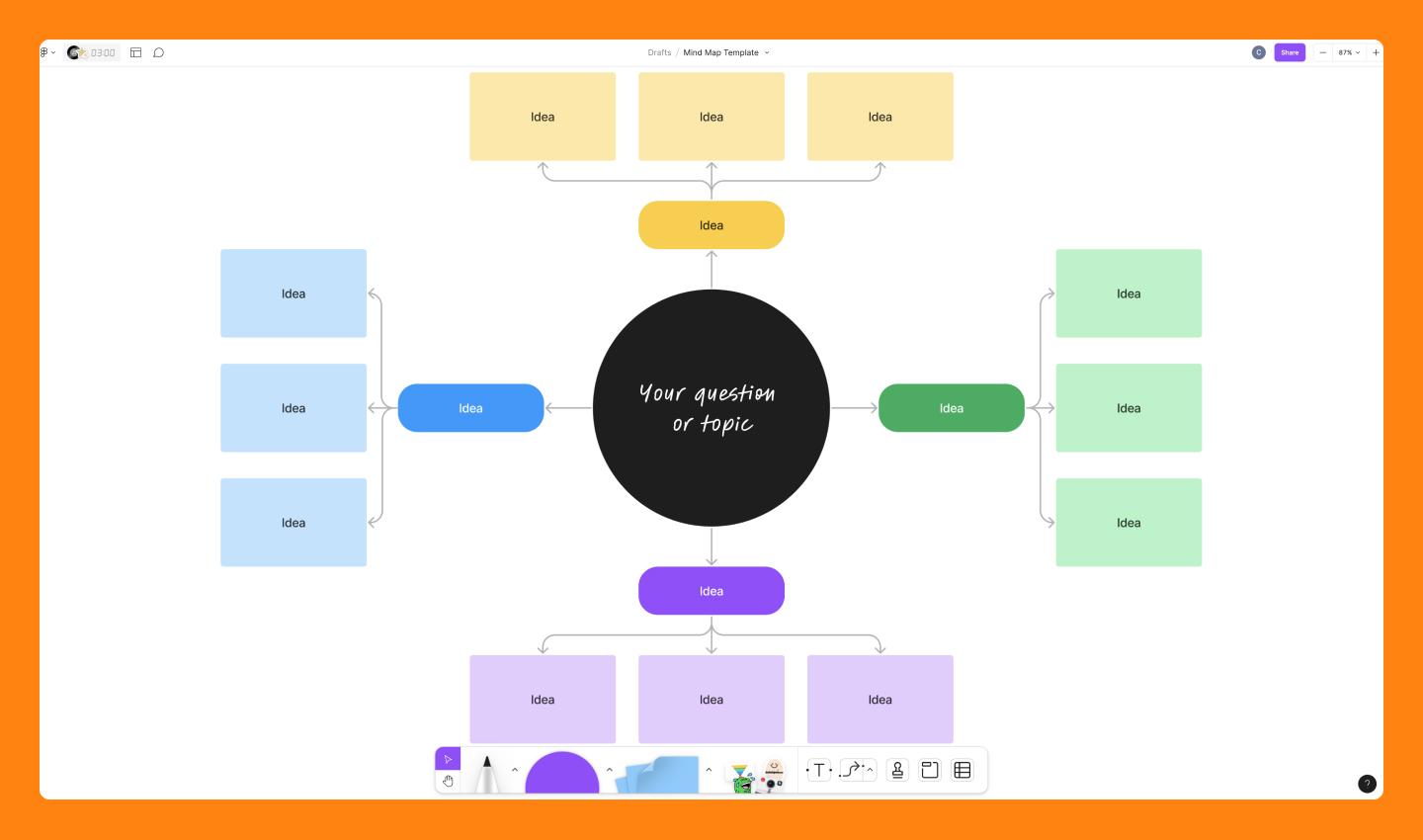
2. Bubble map example
Best for: early-stage planning and collaborative brainstorming
Bubble maps are a popular mind map type. While the simple mind map template includes subcategories, not all bubble maps take that approach. Instead, use them in early-stage brainstorming to help your team lay out core ideas. Once everyone contributes their suggestions, you can assign roles or create a project plan.
Design tip: Color-code bubbles to categorize them or note who added them.
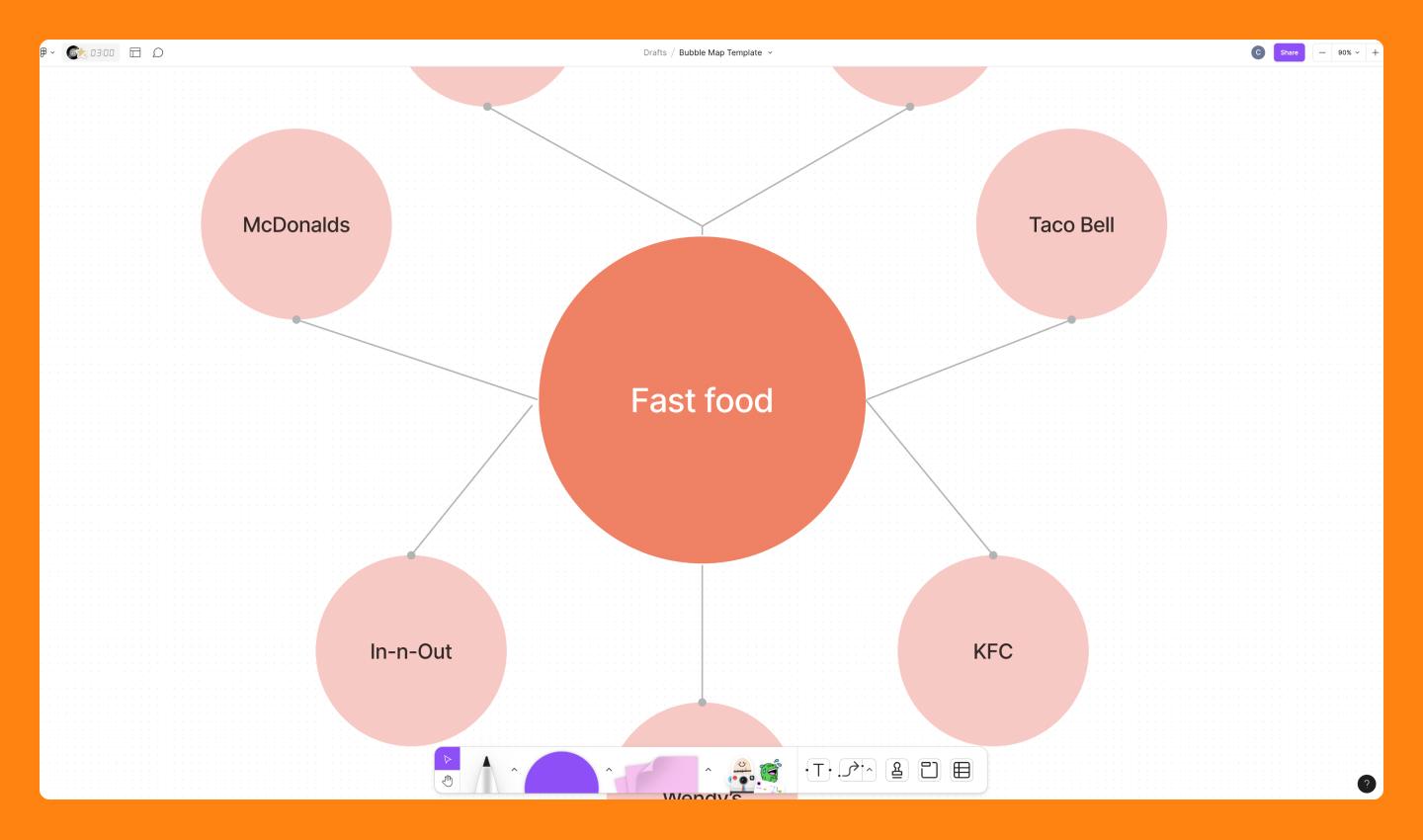
3. Flow chart example
Best for: proficient mind mappers tackling more complex projects
Flow charts create more dynamic connections between subtopics than other mind maps. While most mind maps revolve around a central idea, flow charts outline a series of steps and processes from beginning to end. Their branching structure can also map different routes to the same solution or workflows teams follow in parallel.
On the product side, creating a flow chart visualizes how you want to make a deliverable or how users will interact with it. The sequence of steps helps order your priorities and fine-tune processes.
Design tip: Use arrows to denote the flow of information or the order in a process.
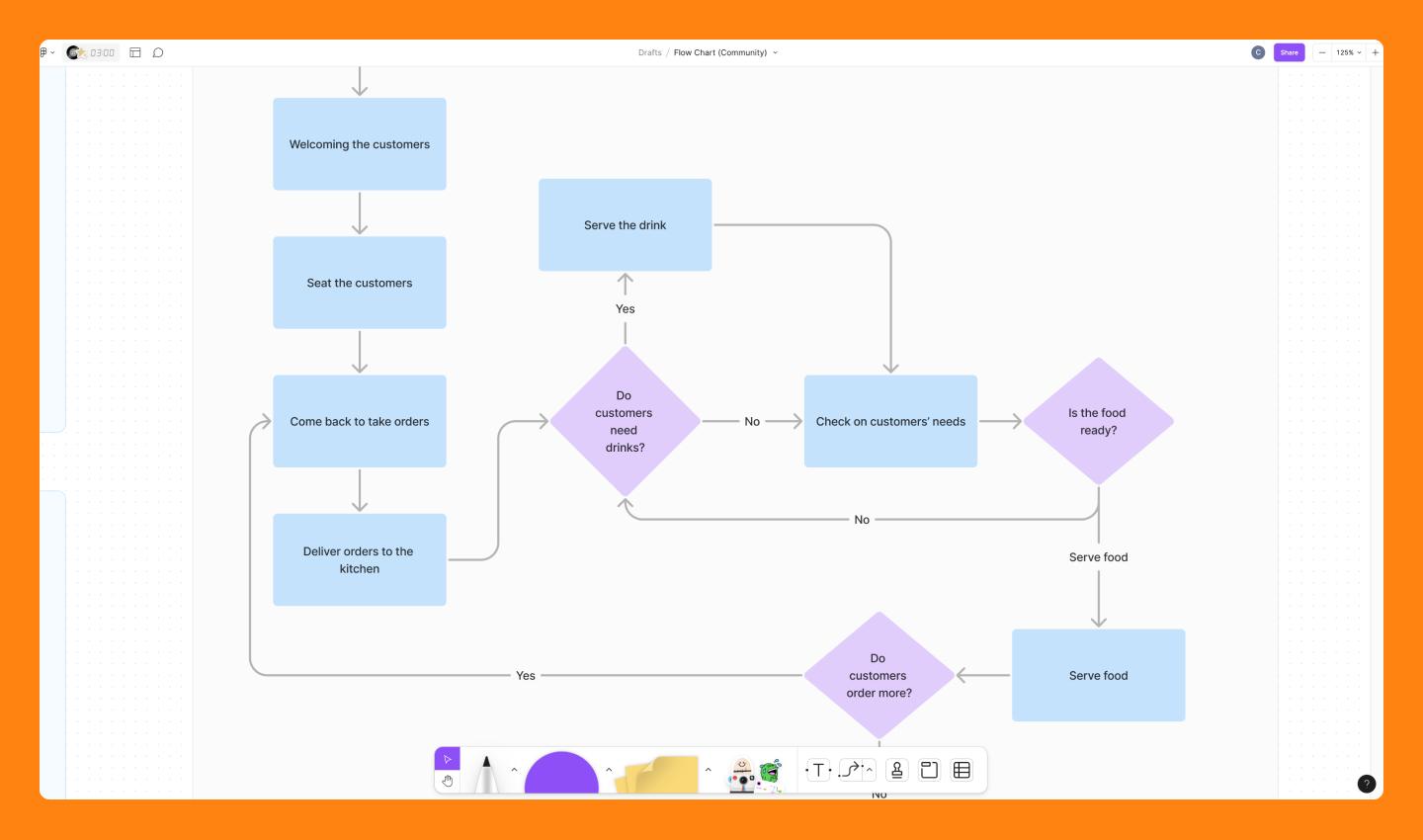
4. Problem-solving mind map example
Best for: individuals or teams solving an issue
A problem-solving mind map drills down on a central issue, its causes, and solutions, detailing the complexity of a problem. Causes, effects, and any unintended consequences of your response all tie together. As a result, problem-solving maps frame a challenge from every angle.
This map plays a role when:
- Facing a complicated business problem
- Organizing a response to an issue
- Outlining the causes of a challenge you’re facing
- Weighing solutions to find one that’s the quickest or most cost-effective
Design tip: Color-code your responses based on who’s tackling each aspect of a problem.
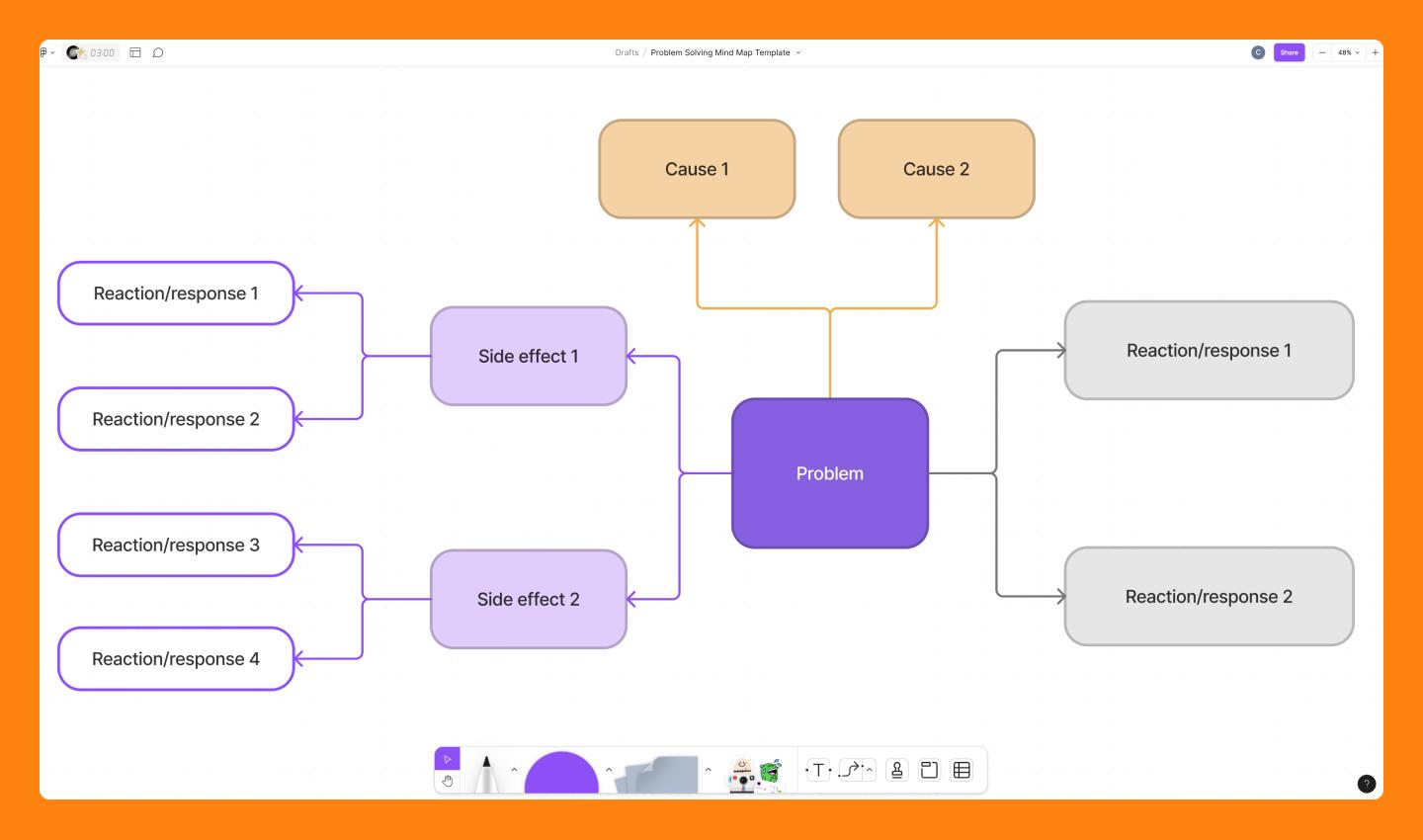
5. Opportunity solution brainstorming example
Best for: managers and teams working toward a specific outcome
This mind map helps you brainstorm solutions to create a desired outcome. Unlike problem-solving templates, this map focuses on an end goal, not an obstacle in your way. It breaks comprehensive goals into more manageable stages and lets you note any resources needed along the way.
For a better collaboration, review the mind map with your team for their insight and revisions. After a project starts, teams can use the template to stay coordinated and on the right track.
Design tip: Color-code boxes or lines for business objectives to note which teams handle which solutions.

6. Project management example
Best for: project managers looking to visualize complex projects
A project management mind map lets you focus on project specifics without losing sight of the big picture. Large projects can take coordination between departments. This map shows how teams work alongside each other to meet specific goals, and managers can use it to improve workflows and increase efficiency. You can also use this mind map to:
- Facilitate project meetings
- Split tasks among your team
- Define team goals and priorities
- Onboard new software
- Document problems and potential solutions
- Map out the steps to achieve project goals
Design tip: To limit the size of your mind map and stay organized, consider breaking off secondary processes into a new mind map.

7. Time management example
Best for: project managers assigning and prioritizing tasks
This time management template uses the mind map format to order tasks over a project lifecycle. You can consider the project the central topic for this chart. Arrows leading to a milestone contain steps in development. The template also gives space for requirements, team assignments, or tools needed to complete tasks.
Time management mind maps help teams and stakeholders gauge progress over a project lifecycle. If certain steps run under or over time, you can make changes to the timeline.
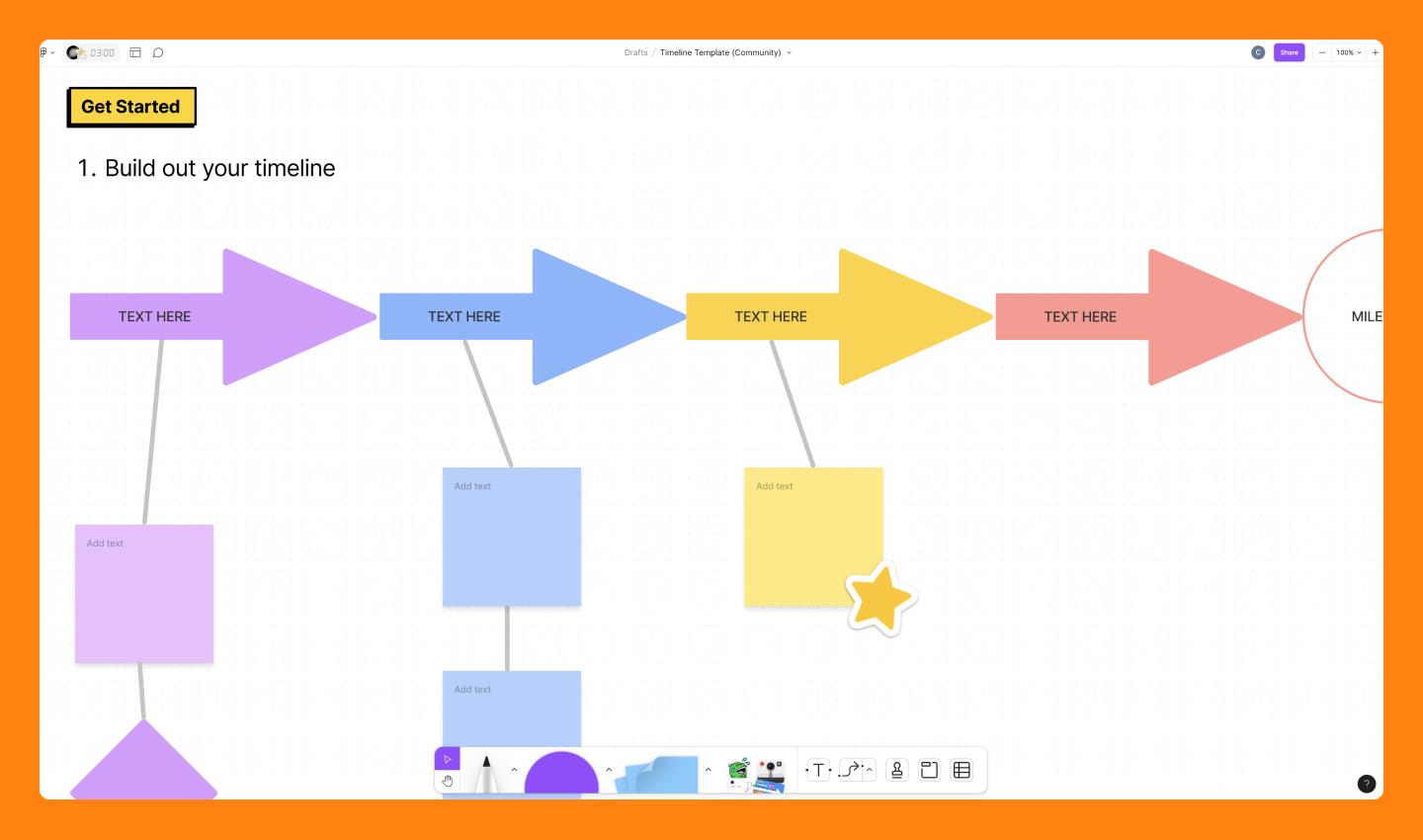
8. Product development mind map example
Best for: product managers, designers, and developers
This product map template breaks new initiatives into features, story points, and debts. For agile developers, this map outlines their process in clearly defined steps and sprints. Thanks to its nonlinear structure, teams can see how they work in tandem. It also encourages collaboration with a suggestion box in the corner.
Mapping developers' progress on a shared map makes tracking each team’s dev work easy. You can also use the map to check which devs have tackled a particular feature or story point. This mind map organizes fast-paced development into an easy-to-read format.
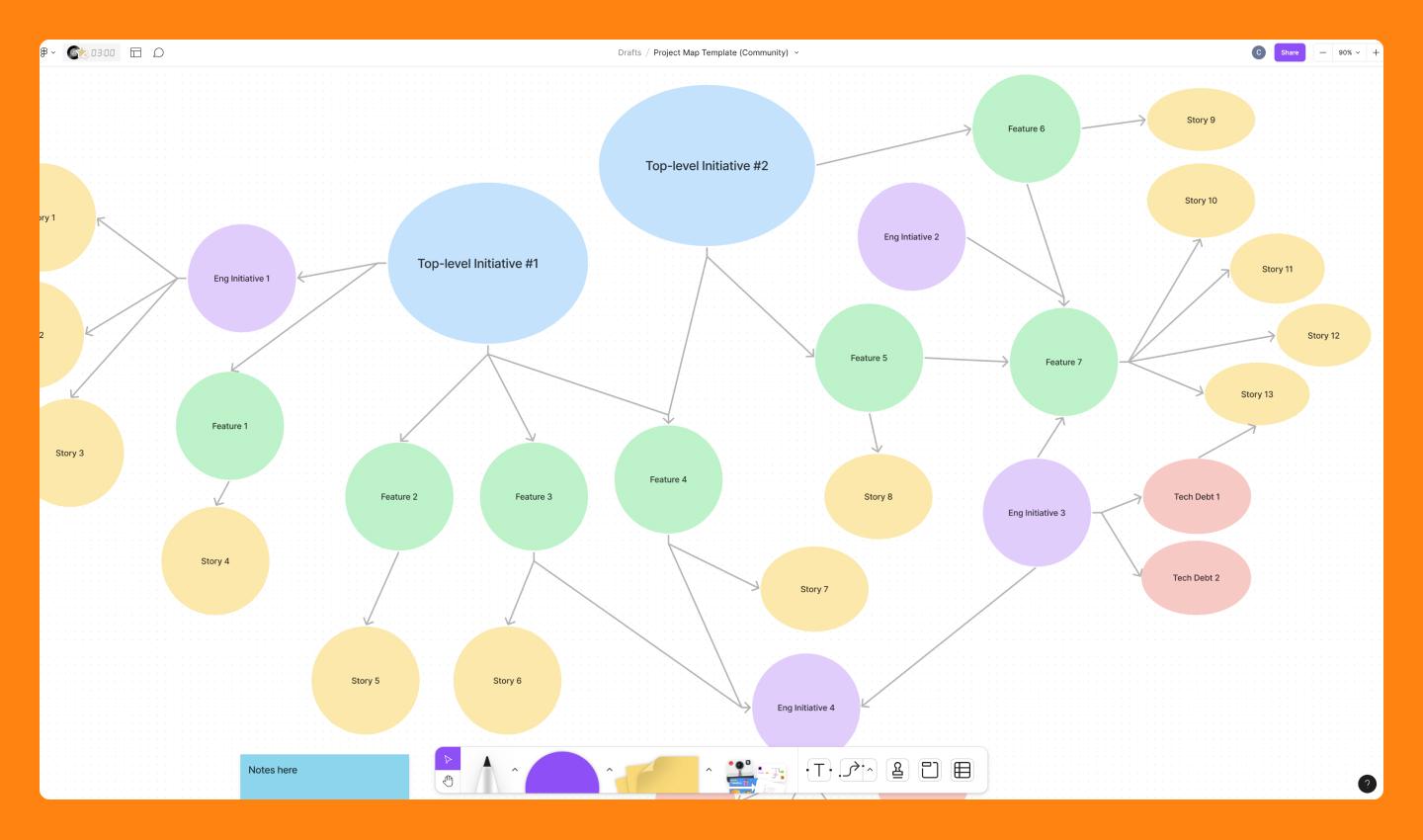
9. Business planning example
Best for: founders, investors, and business leaders who want to visualize their strategies
Business plans are documents listing a company’s objectives, identity, and processes. This mind map visually organizes and connects related parts of a business plan, which helps you brainstorm the steps to your goals, choose where to invest resources, and refine your strategic planning.
This holistic view of your business should include a few key elements:
- A high-level description of your company
- The products or services you offer
- Marketing strategies based on your competition
- Financial information
- Management summaries for your team and company leaders
- Operations information on your teams and processes
Design tip: Use the mind map at the center of this chart to lay out core business information. The surrounding diagrams help build out these initial ideas.
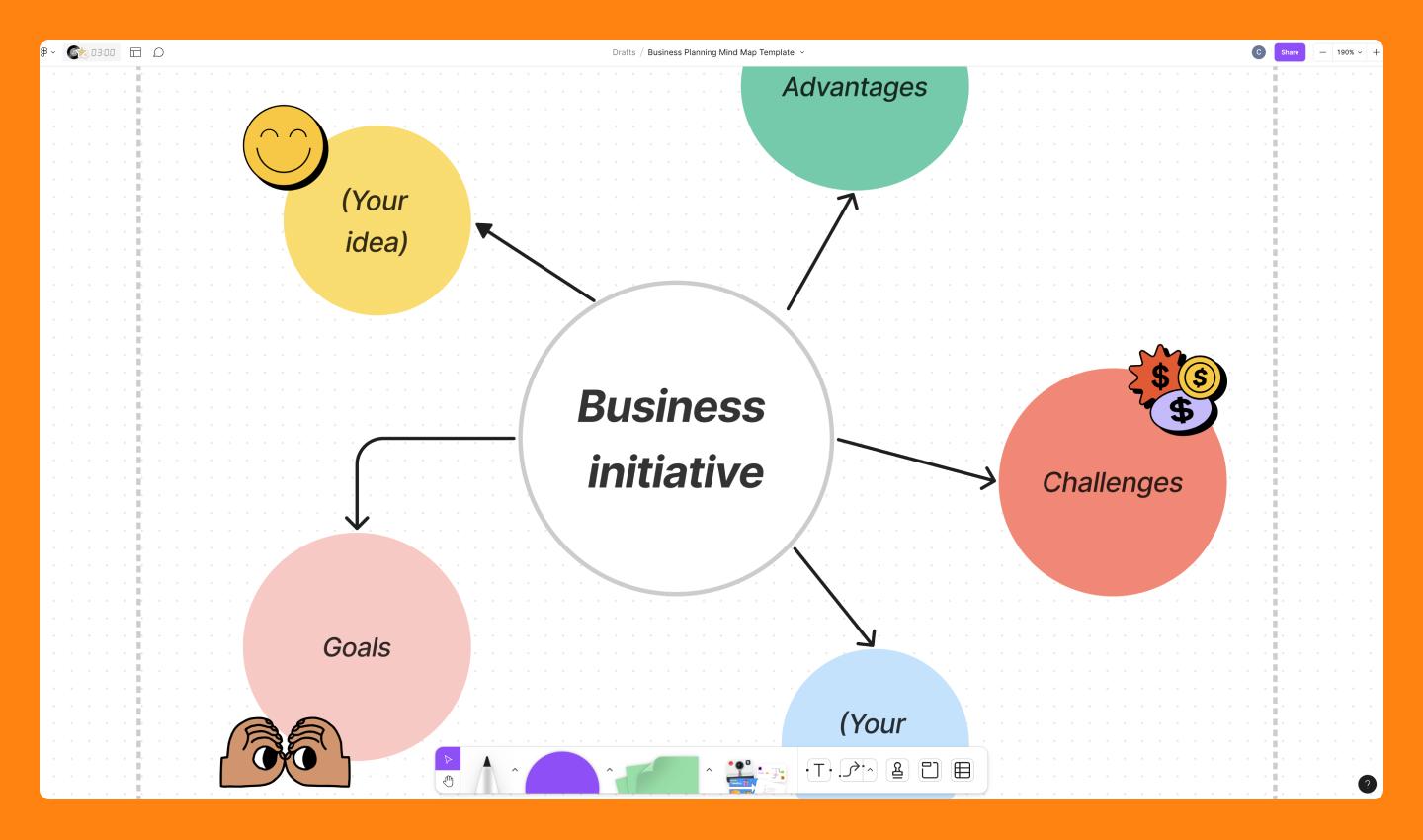
10. Organization structure example
Best for: HR and management teams
An organization structure mind map outlines the departments and teams within a company. You can use it to identify leaders who make decisions and employees who carry them out. Lines between roles also show who reports to whom.
Employee icons can list an individual’s role and other helpful information, like the time zone they work in. As a result, you can see who is responsible for what. New hires can also use this mind map to learn the company structure.
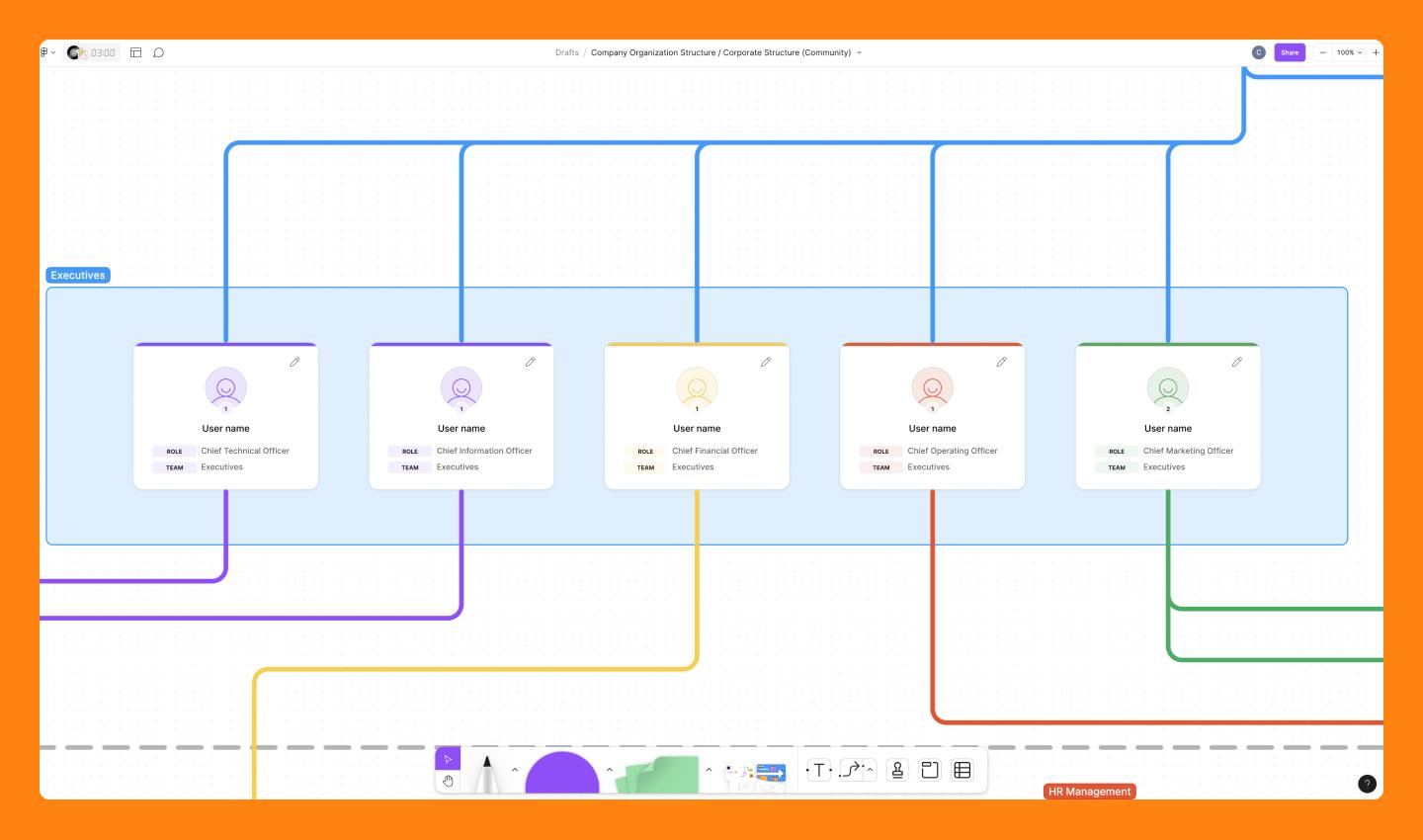
11. Logistics flow example
Best for: distributors and order fulfillment teams
A logistics flow mind map visualizes how you fulfill customer orders. The chart notes internal distribution to warehouses and customer deliveries, outlining the next step at every distribution stage.
When delivering items at a large scale, well-defined processes are key. This mind map charts a consistent process you can use for order fulfillment. It also visualizes the ramifications of changing your approach, reminding you how changes affect downstream steps.
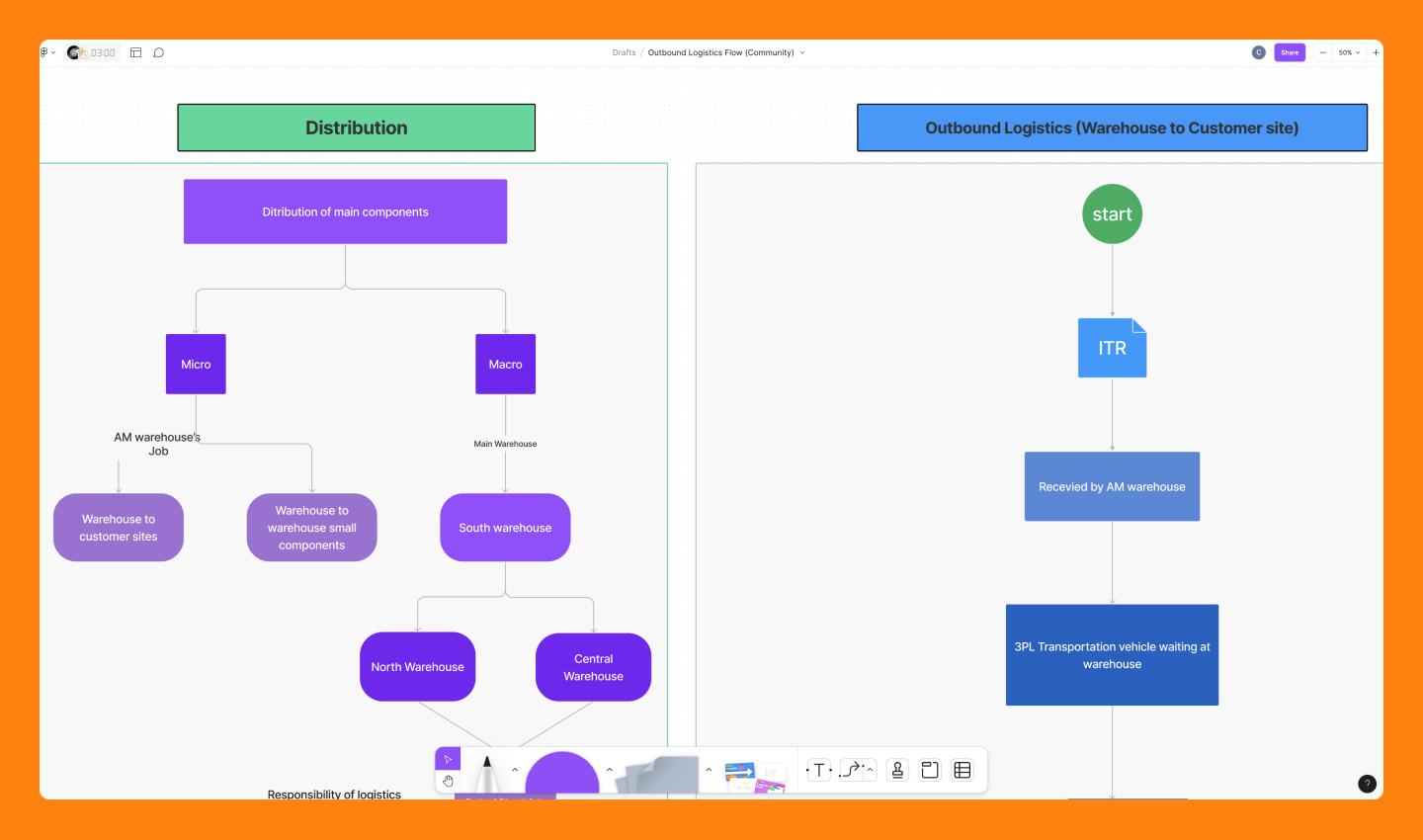
12. Financial planning example
Best for: individuals setting a budget
A financial planning mind map tallies income, expenses, and financial goals. The map organizes short-term expenses like bills and long-term ones like retirement savings. It also tracks your current income and future earnings from a pension.
This template paints a holistic picture of your cash flow and income-to-expenses ratio. It also lets you weigh financial goals against your current financial position so, you can set attainable goals and avoid overspending.
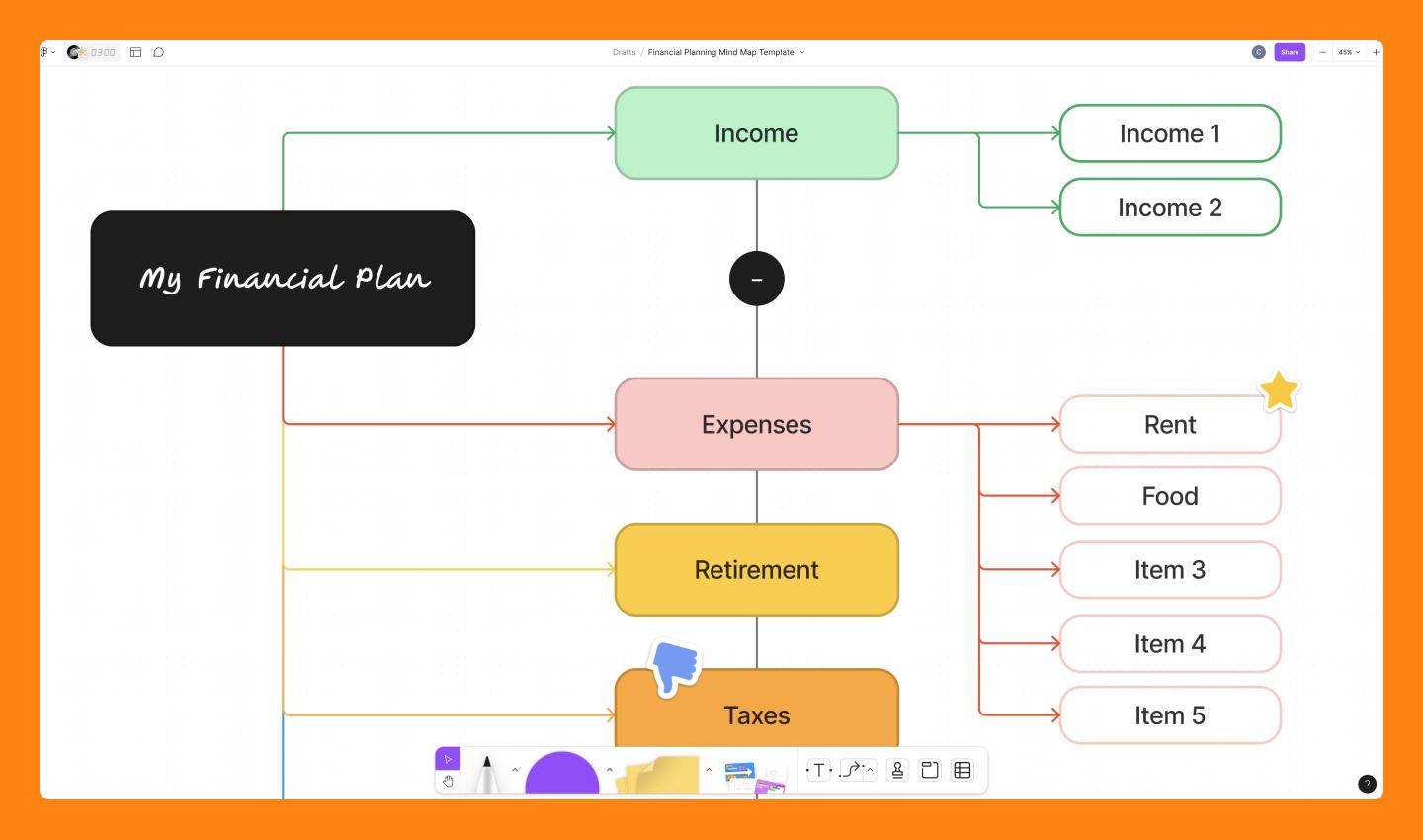
13. Sales funnel example
Best for: sales managers and their teams
This sales funnel template maps the process of moving leads down the sales funnel. The subpoints related to each topic sit inside the funnel instead of in nodes. Under each topic, you can note problems, methods, and considerations for moving customers along.
Sales methods tend to change over time—documenting your approach can help improve your process or switch tactics if one strategy doesn't interest leads. Specifically, you might use this map when deciding how to approach a lead or collaborating on new sales strategies.
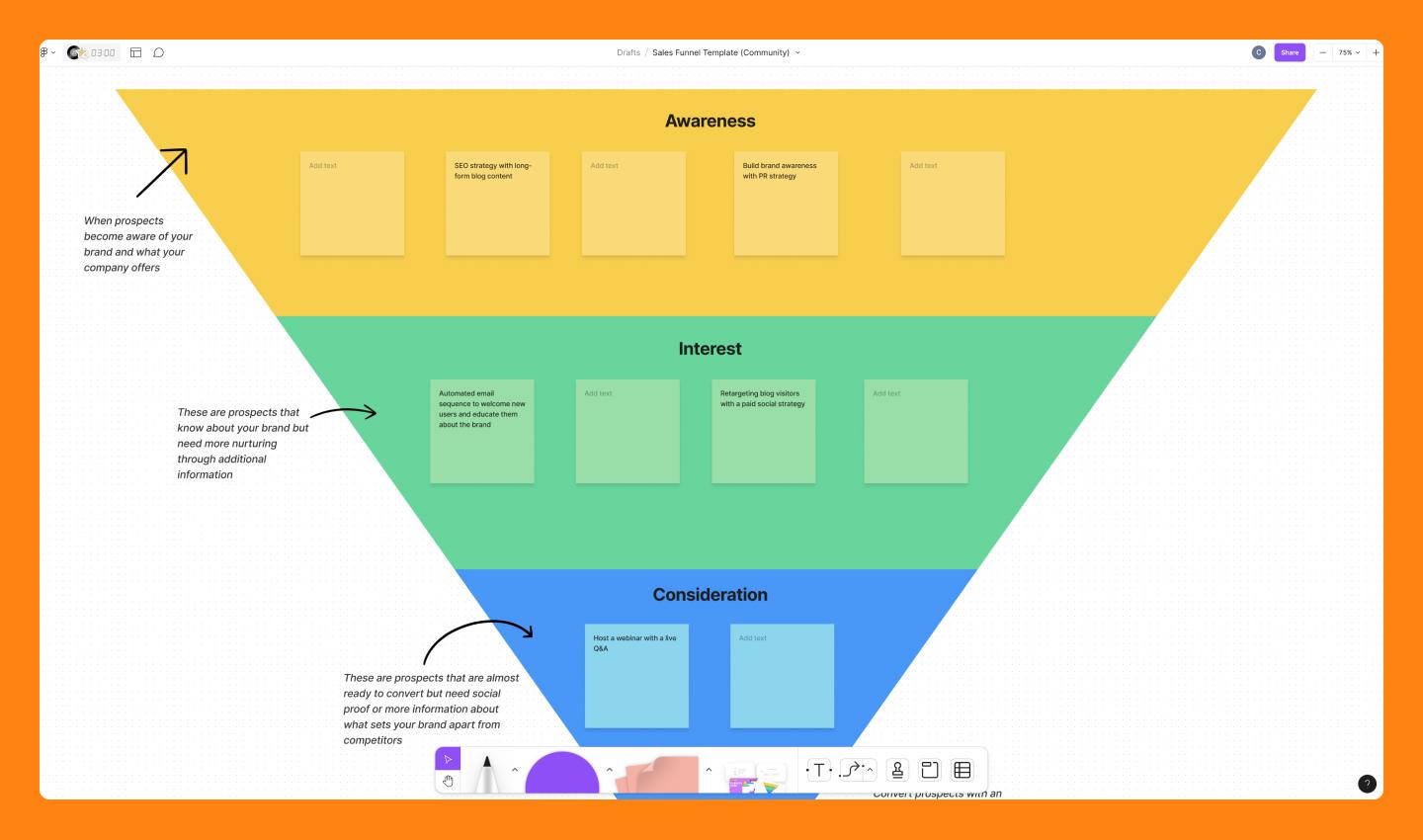
14. Human resources onboarding example
Best for: HR employees
This mind map lists your HR department’s tasks when onboarding a new hire. The mind map breaks up priorities based on time, so the tasks due before, during, and after the new hire’s first day appear in their own category.
This chart keeps HR teams organized during onboarding. HR leaders can also give it to new hires for reference or share it with managers to refine their processes as business needs change.
Design tip: Include a picture of the employee and some basic information to personalize the chart.
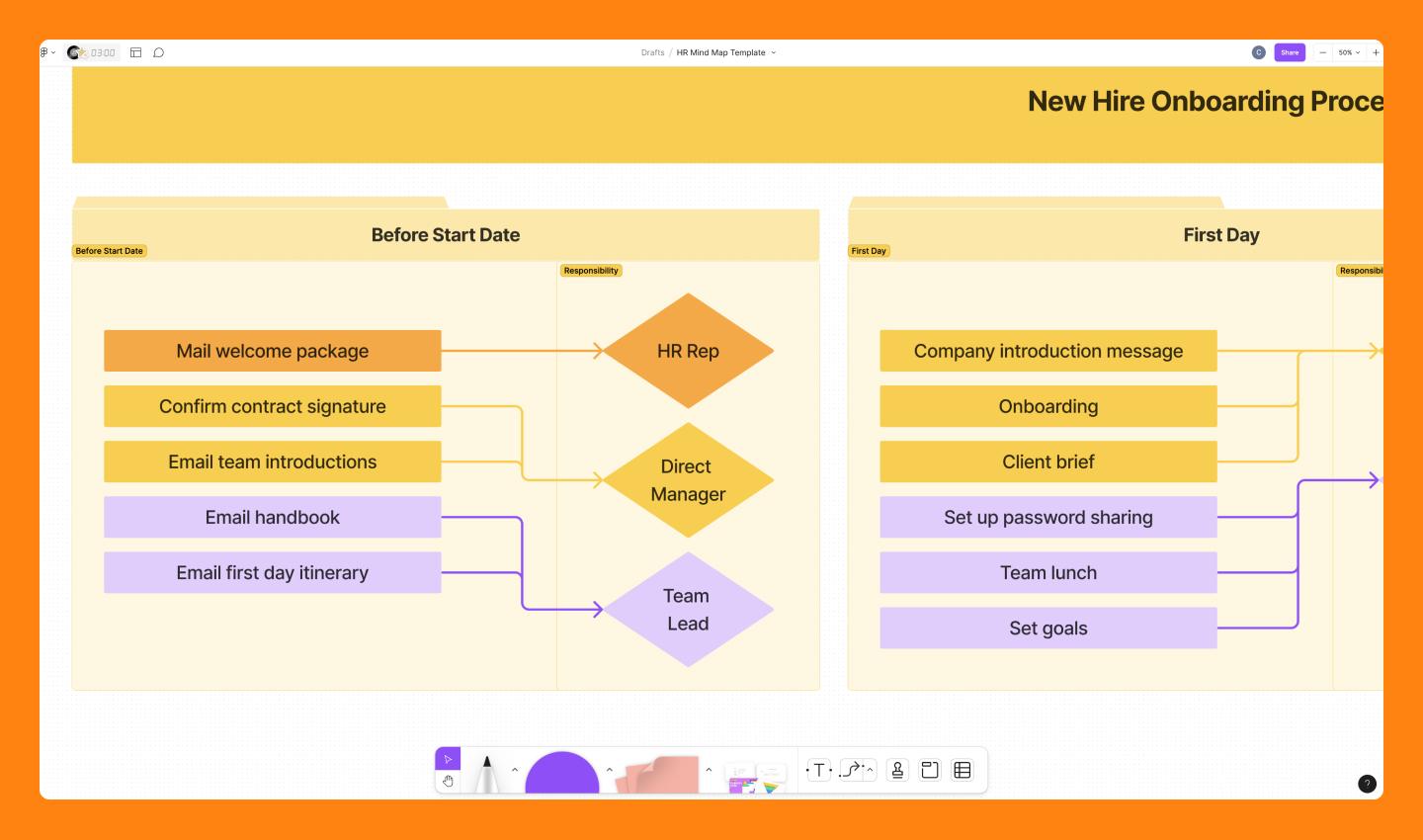
15. Job hiring example
Best for: managers and HR teams
This mind map charts the process of filling a job opening on your team. Unlike the onboarding template, this map follows a more high-level approach. It breaks the main hiring steps into subcategories and allows you to fill in company-specific information for your hiring strategy.
Job hiring templates help managers and HR teams design a hiring process where they can cooperate on strategic decisions and priorities. Listing job criteria and hiring best practices on this mind map also keeps them accessible.
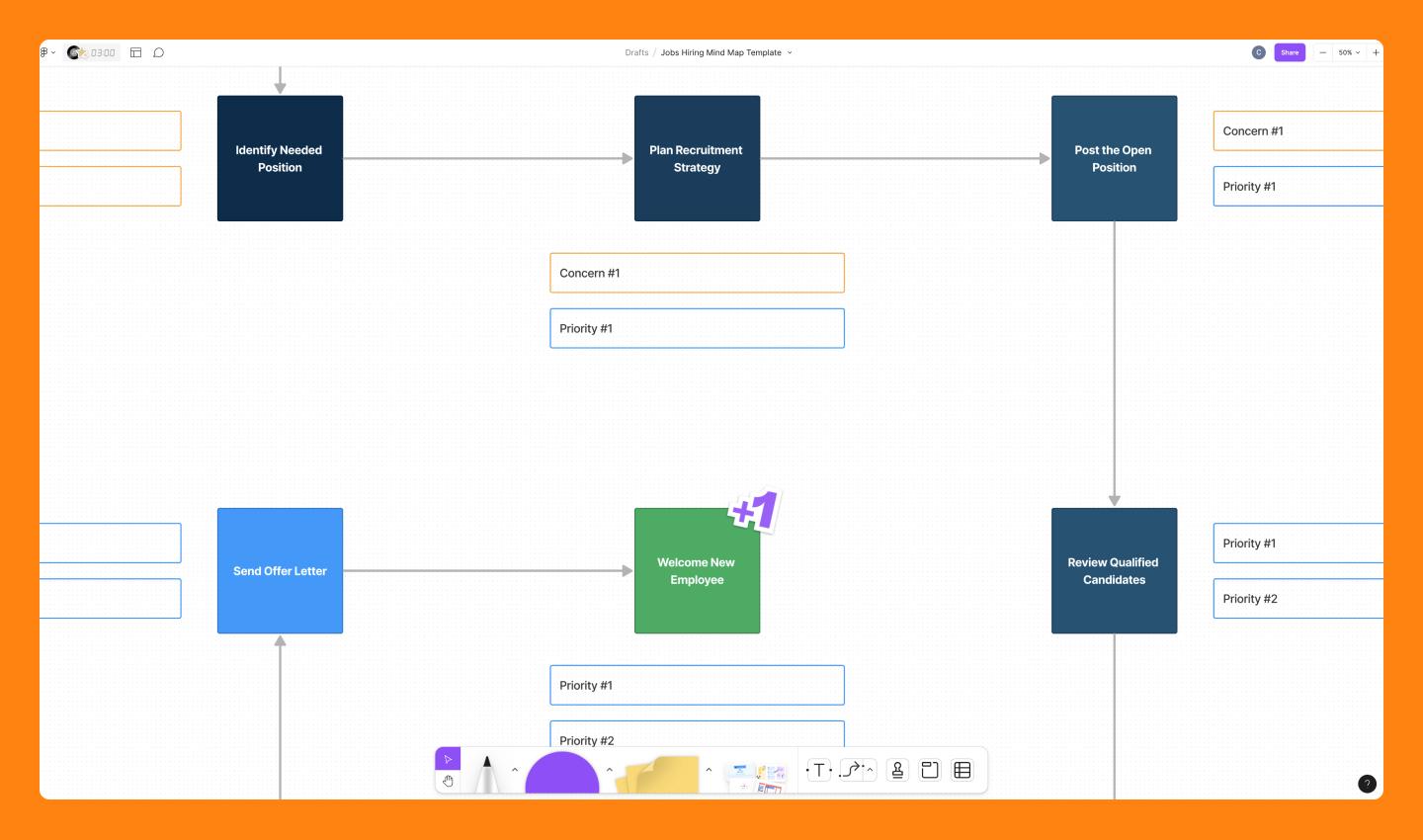
16. Web design example
Best for: domain owners and Web designers
This Web design template gives a high-level overview of what will go onto your Web pages. This map paints a picture of your Website’s UX by including high-priority links in the header and footer, search functions, and images. While you can organize pages for blogs and features, that doesn’t come at the cost of mapping your core page structure.
You might use this template when:
- Working in the early stages of Web design
- Picking your Website’s core functions
- Designing your Website’s interface
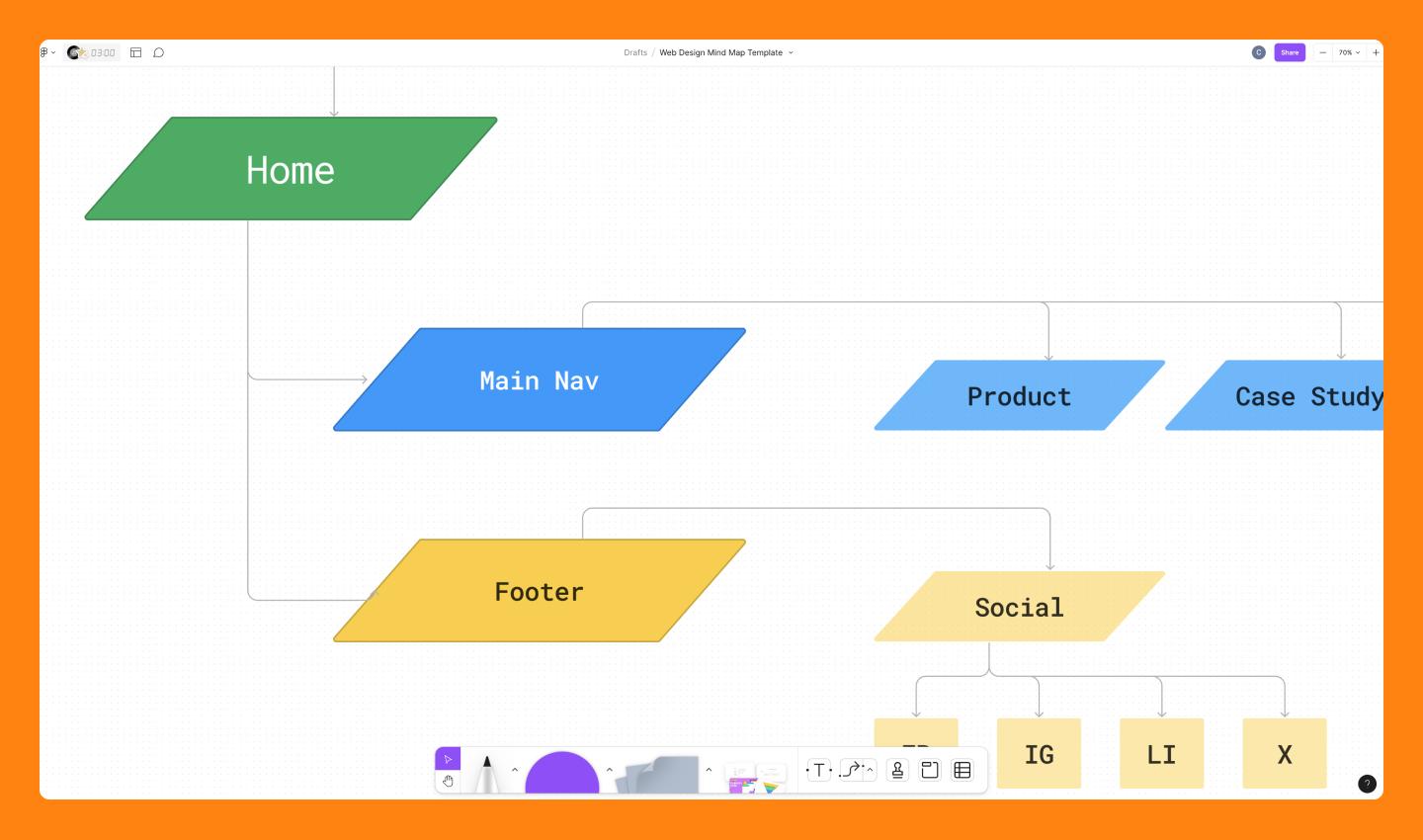
17. Site map example
Best for: Web designers and developers
This site map template allows you to map out how pages connect on your Website. While the Web design template focuses on UX, this chart focuses more on subdomains and links connecting pages. Illustrating your site architecture helps optimize it and ensure pages link together intuitively. Managers and Web designers can also share suggestions and feedback on the map.

18. Blog structure example
Best for: content marketers and Web developers
Blog mind maps visualize the structure of an SEO-optimized blog page. They list the categories covering topics related to your business and the number of articles within them.
Developers can use this template to understand the full scope of a blog they'll build. It also allows marketers to hone in on keywords that capture the most traffic. Since blogging is an important marketing element, building an optimized blog can draw in new customers and help define your user personas.
Design tip: Include topic ideas underneath the lowest boxes to brainstorm the kinds of articles you want to write.
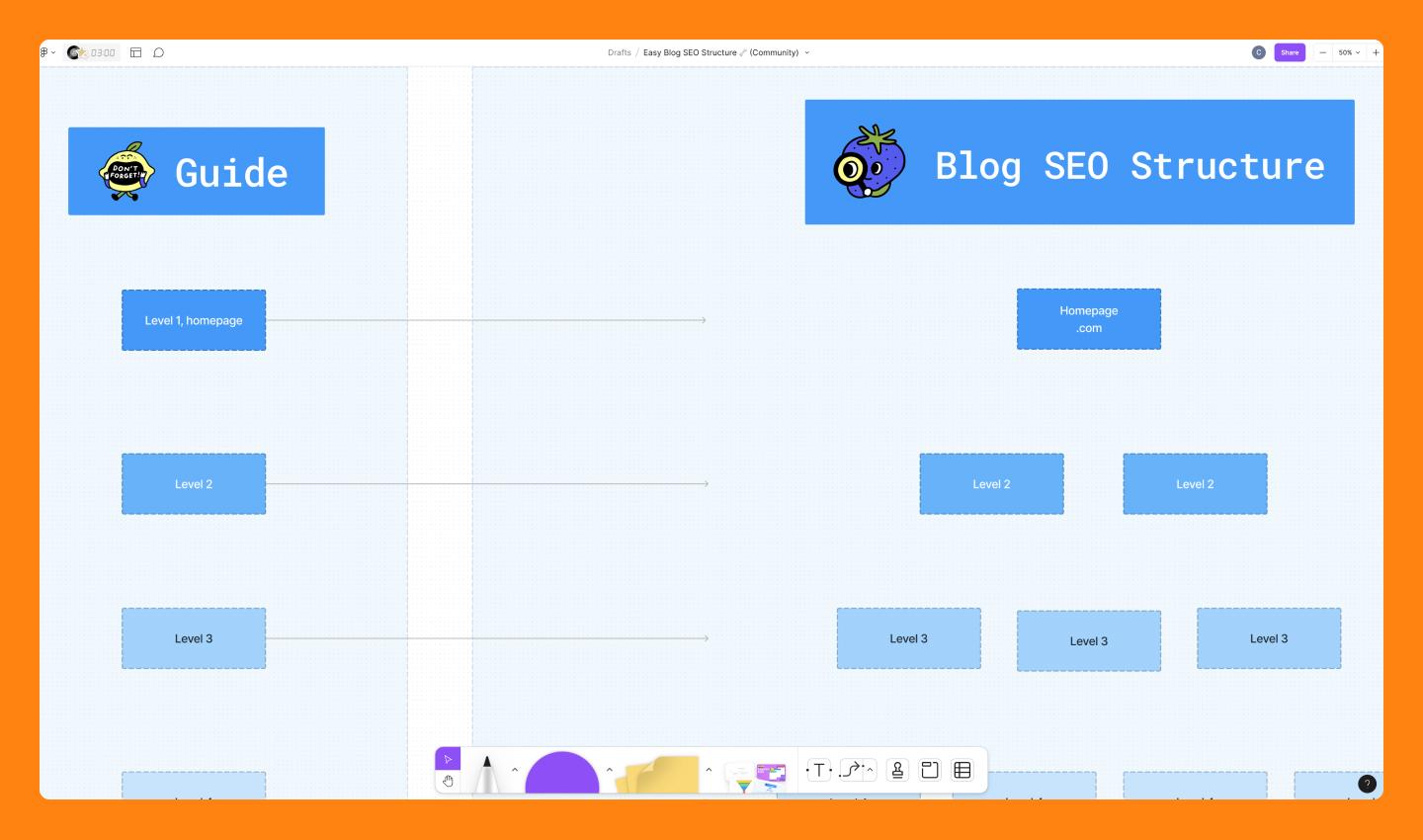
19. Meeting agenda example
Best for: meeting leaders or team members who want to contribute to an agenda
This meeting agenda template blurs the line between a mind map and an agenda. Like a mind map, it's built around a central topic—in this case, the meeting—and team members can add discussion points or additional notes. Your agenda outlines the points covered in your meeting, whether it's a regular get-together or preparation for a new project.

20. Transportation example
Best for: individuals and businesses planning transportation
Transportation mind maps outline the logistics of planning transport. They account for the cost, time, and resources that go into getting from point A to point B. You can also adjust these variables based on where you're going and when. This chart lets you organize transportation options in a central place your team can refer to at any time.

21. Event planning example
Best for: event organizers
An event planning mind map outlines the tasks needed to prepare for a special occasion. Instead of branching into nodes around a central topic, categories revolve around tasks due at different intervals. You can also enter event details and ideas into an overview section. This template helps event planners stay organized and share their schedules with vendors and other stakeholders.
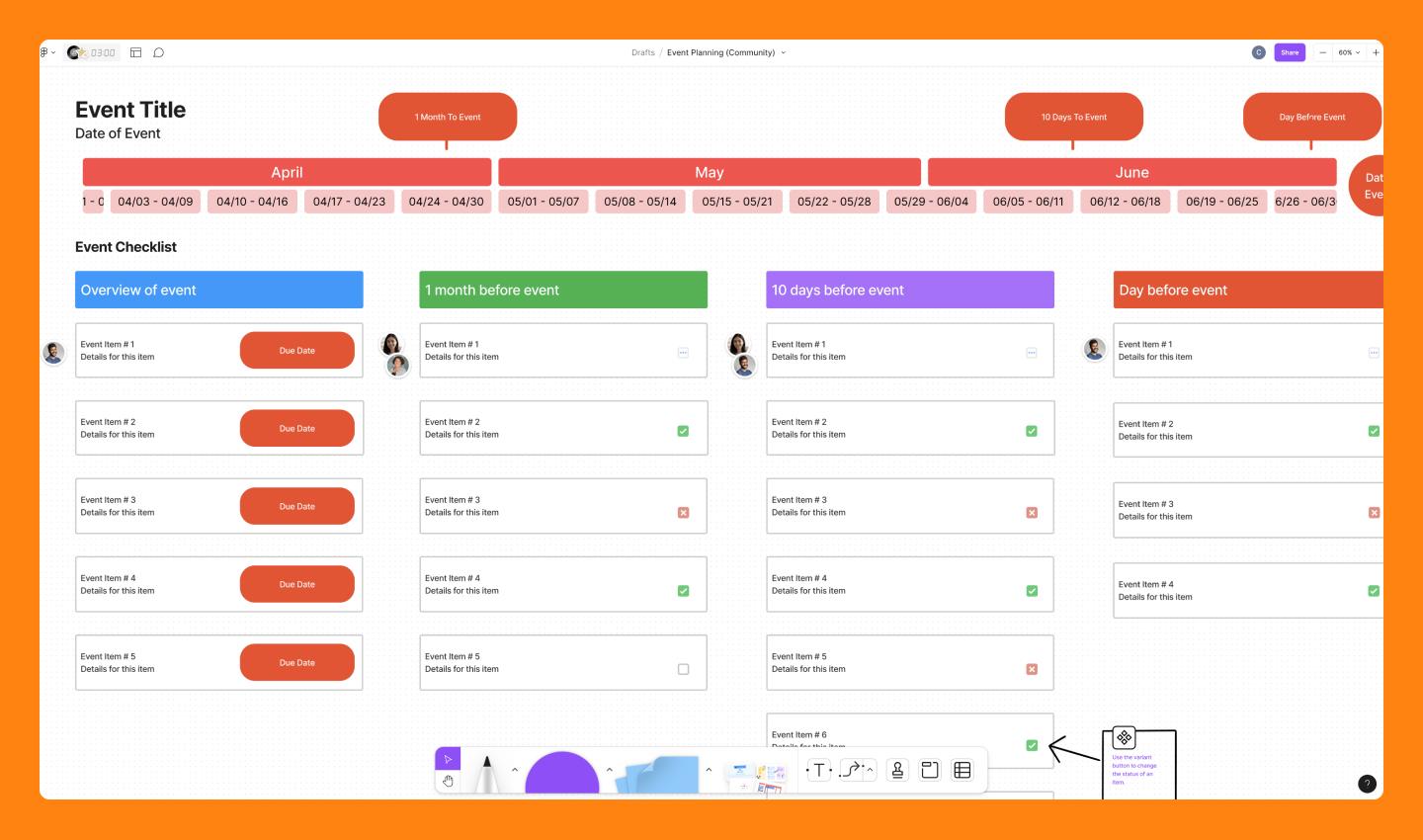
22. Note-taking example
Best for: those taking meeting or class notes
Note-taking templates provide a visual alternative to writing bulleted notes on a page. With this template, you can note how broad concepts break off into smaller ideas and explain their differences.
This template shows visual learners how ideas connect, and conveys information more quickly than reading down lists of facts on a page making it one of the best mind map examples for students. Use it for:
- Listing crucial ideas during a lecture
- Sharing information with someone who couldn’t attend a meeting
- Summarizing the main points in a lesson

If you're looking for a more straightforward note-taking template, consider these:
23. Creative writing example
Best for: writers and editors who create story overviews
Creative writing mind maps visualize the most critical elements of a story—your plot, characters, themes, and setting all relate when writing a narrative. With this map, you can create a visual relationship between specific themes, chapters, and characters.
Mapping a story lets you hone in on its most essential qualities. Whether that means charting a central theme or the story's climax, you can highlight the story's main message. You can also use this template to pitch your story to agents and publishers.
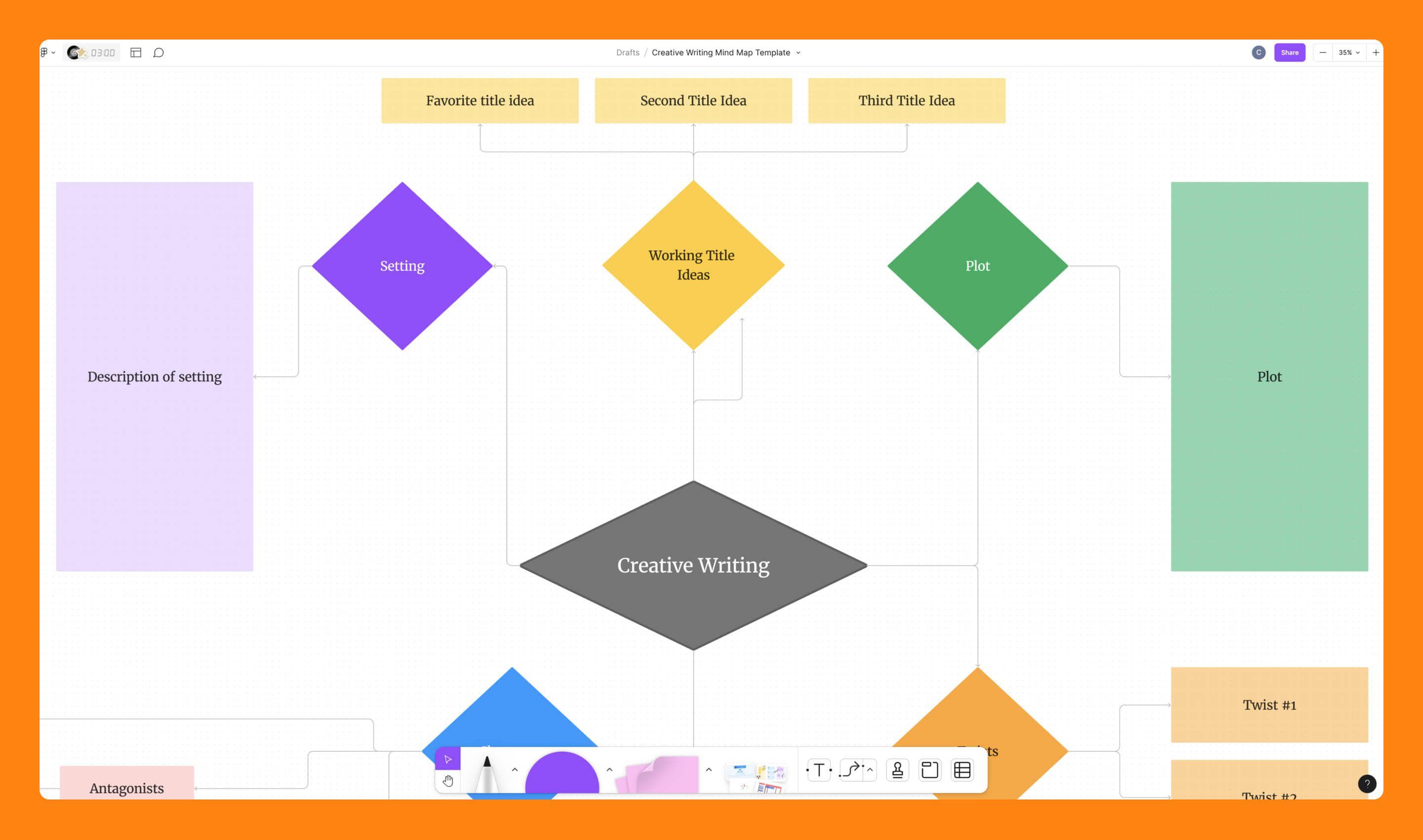
5 key characteristics of mind maps
If you’re new to diagramming, you might not recognize mind maps on sight. Plenty of diagrams help with brainstorming, but mind maps play a key role in early-stage ideation and planning. Typically, a mind map has five elements:
- The chart revolves around a central image or idea.
- Themes branch out from the main idea.
- These branches include a keyword or image labeled on their lines.
- Less important topics typically only appear as "twigs" on these branches.
- The branches form a unified structure made up of individual nodes.
Mind mapping FAQ
We’ve answered a few common questions about mind maps below.
What is the best type of mind map?
The best mind map depends on the specific task you’re planning for. When you need to manage a project, design a Website, or make financial plans, there’s a mind map for it. If you’re in the early planning stages, a general template will likely suit you better. For that, we recommend the simple mind map, bubble map, or flow chart.
What mind-mapping best practices should I keep in mind?
On top of choosing the right template, here are a few tips to make the most of your mind map:
- Color-code related ideas to visually associate them.
- Use arrows and icons to show how ideas connect.
- Make sure your mind map branches out from one central topic or idea.
- Keep the text short and clear to let the visuals convey information.
Do I need mind map software?
You don't need a dedicated service to make or customize mind maps. However, platforms like FigJam offer the chance to collaborate on mind maps remotely via our online whiteboard tool. We also provide a library of over 300 templates to help kick-start your creativity.
Improve team collaboration with FigJam
Mind maps aren’t just places to list ideas. As you can see from the mind map examples above, these diagrams give you the space to think through solutions and explore ideas collaboratively.
The good news is, you don't have to create a mind map from scratch. Get started on your next project using our FigJam mind map template. We also provide a library of over 300 templates to help kick-start your creativity.




